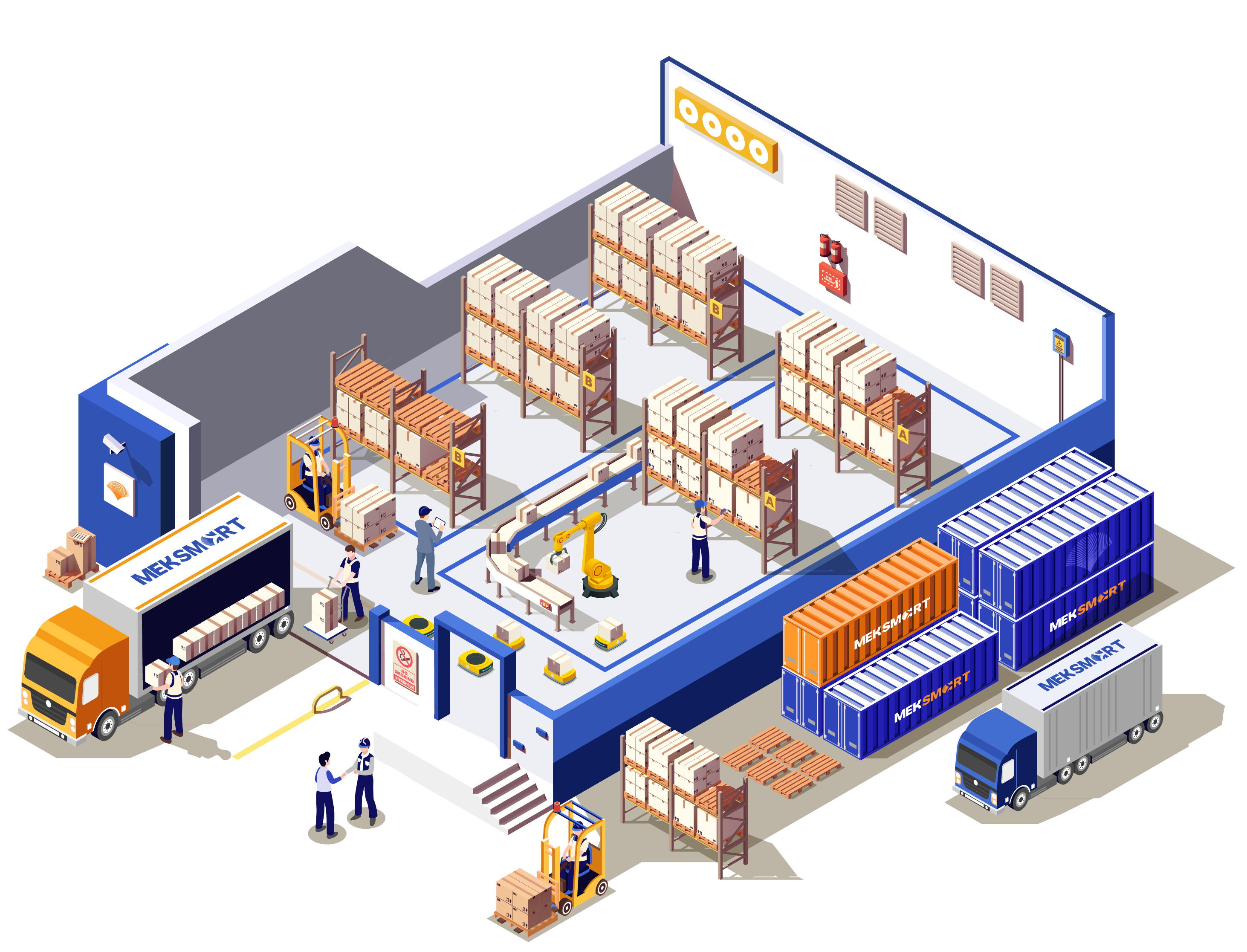MEKSMART
GENERAL NEWS
Author:
Update: 15/12/2022
THE ROLE OF THE WAREHOUSE
The warehouse is an essential component of the supply chain, almost related to the stages from receipt of raw materials, and production in the system to the completion of products. Warehouses need to be designed and operated according to a system with special requirements, requiring vehicles, personnel, and equipment to operate. Warehousing is often a costly element in the supply chain, and so managing it effectively will be the deciding factor in both pricing and customer service.
The most important goal of a warehouse is to facilitate the movement of goods throughout the supply chain to meet the end customer. There are several techniques to reduce inventory, such as Just-in-time (JIT), Efficient consumer response (ECR), etc.
1. Specifically, warehouses must comply with the following two rules:
Demand for goods is continuous
- In industrial zones, such as fashion goods, some models may be produced in a single batch. In that case, the goods need to be "pushed" to the store, and it doesn't have to go through the warehouse. However, many goods are put for sale on an ongoing basis and therefore need to be “pulled back” in order to adequately meet customer demand.
Lead time supply is longer than lead time demand
- When the goods are requested by the customer, the lead time required is very short, maybe just after "clicking" the order. But the lead time for goods to be provided to customers must include the time it takes to source materials, production time, shipping time, etc. Therefore, the goods will definitely need to be stored to provide them. timely level.
- Holding inventory is just one of a number of roles a warehouse has. Thus, in response to the increasing importance of goods movement, some role is related to the speed of goods movement such as inventory holding.
2. Here is a list of common roles:
Determine reasonable inventory storage points
- Determining a reasonable inventory storage point involves many different departments, such as the demand forecasting department, and the production department.
Commodity gathering center
- Customers often order several product lines rather than and are usually shipped together. Warehouses can perform the function of storing them as a collection point from other sources and from the amount of stock available in the warehouse.
Cross-docking Center
- If goods are purchased from many places in the supply chain (directly from the manufacturer or from another warehouse), and in order to fulfill the customer's order, the warehouse is now cross-docked. This means that the goods are transported directly from the input vehicle and exited by the output vehicle without having to store the goods in the warehouse, as the goods have been divided according to the customer's order. row.
Sortation Center
- This is a basic cross-docking center, but the term tends to be used for a shipping station, where goods are purchased at a warehouse for the purpose of sorting goods by region or customer.
Assembly vehicle
- It is often used to delay production as much as possible to minimize inventory. The warehouse can become a final assembly point for a product, including activities such as kitting, inspection, cutting, and labeling.
Transshipment point
- This is an important and indispensable part when supplying goods outside the country. When goods are transported by many different means, for example, imported goods will be transferred from sea transport to railway, from railway will be brought to the warehouse to be transferred by road and delivered to the customer...
Returns receiving center
- Handling returns is becoming more and more important. Especially the development of online buying and selling. Returned goods will be returned to the warehouse and processed here.
- Warehouses today often combine different roles, there are also many warehouses with different names to reflect the different warehouse roles. Examples are consolidation centers, JIT sequencing centers, customer service centers, fulfillment factories, and e-fulfillment centers.
Synthesized and compiled: Nguyen Xuan Hoa.













